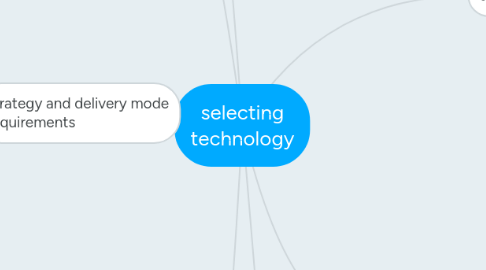
1. what's involved
1.1. learner
1.1.1. data on learners
1.1.1.1. prior knowledge
1.1.1.2. cognitive, physical, interpersonal capabilities
1.1.1.3. motivation
1.2. instruction
1.2.1. strategies/methods
1.2.2. pedagogical approach
1.2.3. media affordances
1.3. content
1.3.1. extent
1.3.2. complexity
2. consulting project analysis data
2.1. learners
2.1.1. interests
2.1.2. motivation
2.1.3. prior knowledge
2.1.4. attitudes
2.1.5. literacy/language
2.2. lifespan and content
2.3. constraints
2.3.1. delivery methods
2.3.1.1. where/when
2.3.2. budget
2.3.3. human/nonhuman resources
2.3.4. performance and learning contexts
2.3.4.1. degree of alignment
2.3.4.2. availability and applicability of technology
2.4. pedagogical approach
2.5. stakeholder requests
3. strategy and delivery mode requirements
3.1. strategy requirements
3.1.1. support for demonstrations
3.1.2. motion
3.1.3. drill
3.1.4. practice excercises
3.1.5. multiple examples
3.1.6. recording learner response
3.1.7. cues
3.1.8. feedback
3.2. support
3.3. delivery
3.3.1. graphics?
3.3.2. breakout rooms
3.3.2.1. monitoring?
3.3.3. asynchronous/synchrounous
3.4. technologies
3.4.1. web 1.0
3.4.1.1. read-only content
3.4.1.2. instructivist
3.4.2. web 2.0
3.4.2.1. read/write web
3.4.2.2. contribute and share
3.4.2.2.1. blogs
3.4.2.2.2. wiki
3.4.3. web 3.0
3.4.3.1. the semantic web
3.4.3.2. personal interest
3.4.3.3. customize learning
3.4.3.4. track own progress
4. media affordances or attributes
4.1. characteristics that support learning
4.1.1. media attributes
4.2. different tools for Blooms
5. best practices and media theories
5.1. Gestalt
5.2. cognitive load
5.3. single and dual channel delivery theory
5.4. Meyer's theory of cognitive theory of multimedia learning
5.5. Marshall McLuhans'
5.5.1. "the media is the message"
5.5.2. the harder you work to understand the message the more you learn
5.6. Clark vs. Kozma Media Debate
5.6.1. nature of effect of media on learning and content
5.7. emerging technologies
5.7.1. PLE
5.7.2. TED talks
5.7.3. "best site", "best e-learning"
5.7.4. Horizon Report
5.7.5. conferences
6. the challenge
6.1. client
6.2. schedule
6.3. experience
6.4. budget
6.5. availability of
7. how technology helps
7.1. products
7.1.1. hardware and software
7.2. process
7.2.1. share information
7.2.2. avoid time consumption
7.3. must be used to meet a specific instructional need
7.3.1. how will technology help meet goals
7.3.1.1. learn from it
7.3.1.2. learn about it
7.3.1.3. productivity
7.3.1.4. learn with it
